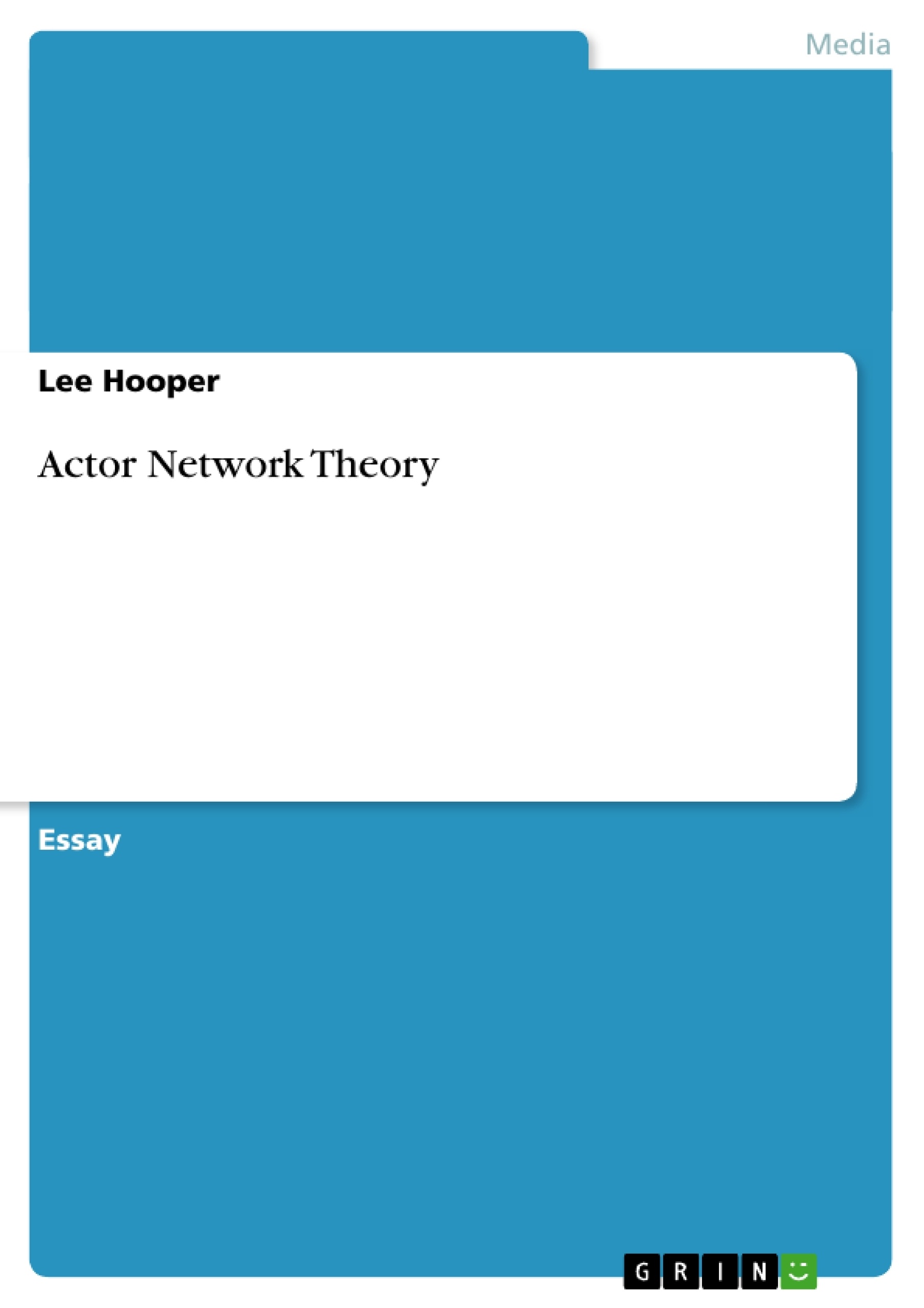Actor Network Theory (ANT) is a sociological and anthropological trend that looks to understand the complexities of how technology and society function in relation to each other; specifically how the power networks between technology and society work and how they influenced each other (Ziemkendorf, 2007, pp.1-2).
Description
Actor Network Theory (ANT) is a sociological and anthropological trend that looks to understand the complexities of how technology and society function in relation to each other; specifically how the power networks between technology and society work and how they influenced each other (Ziemkendorf, 2007, pp.1-2).
ANT states that when studying networks there is a tendency to focus either on the technological or social aspects that form the networks. In doing so, one falls into either technological or social determinism, whereby any explanation of the outcomes being studied are limited to a purely one-sided evaluation (Lukie, 2009). For example, the social scientist will look to explain the technical aspects of a device, such as a new water pump, in terms of social categories – that is, how it socially came about and how it functions and transforms or maintains social structures. A purely technological approach would view the pump as a further advancement of technology that moulds and develops the society that it is placed in from a structural and cultural aspect.
ANT proposes a ‘socio-technical’ approach that encompasses the holistic interconnectedness between the social and material, or as ANT lingo goes, the human and the actor (Lukie, 2009). Both the human and the actor are seen as equal and incapable of separation. To separate them, as both determinist approaches mentioned above do, is claimed to be flawed. ANT looks to a heterogeneity of action to explain actions. This translates to combining all the dissimilar parts, which make up the action, and focusing on the effects, rather than the perceived causes (Munro, 2009, pp.125). For instance, in the case of the new water pump, ANT explains it action in relation to both the practical technological innovations and social constructions that are in play in reality and how they interact, rather than formulating purely theoretical concepts.
ANT also focuses on the associations, or agencements, of actions. In essence, that is focusing on how the different combinations, or medium of forces, organise and influence each other (Munro, 2009, pp.125-8). The general trend in the field of sociology and anthropology is to give the power-influences properties to only human consciousness, specifically human intention. The central thesis of ANT is to rearrange the power networks to include material objects and their associated effects upon humans, rather than the other way around. It looks at how newly created associations can create new actions between humans and the actors, and in doing so, measures the actions that take place as the key change in power – regardless of whatever intention was behind them. This power of association is measured in both its ability to give and take power away. By placing emphasis on power within the rearrangement of actors, ANT also shows how power is most effective in its ‘silent’ form. For example, when a water pump is introduced into a society, ANT will look at the varying different networks, in (pre-) construction, installation, usage, and the suggestive nature of silent power; such as colouring the pump brightly to influence and direct its surroundings. ANT shows how the different pathways and their associated intermediaries create assemblages, which can affect how power is directed. This basically translates to how, both human and non-human actors, in their groupings, change different power structures around them.
[...]
- Quote paper
- Lee Hooper (Author), 2012, Actor Network Theory, Munich, GRIN Verlag, https://www.grin.com/document/262265




